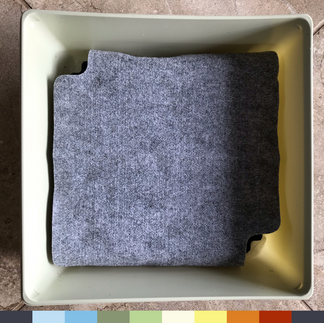
In “GROWING PLANTS FROM SEED 1” I touched on the general aspects of growing your own plants from seed like:
Where will the plants grow eventually.
Start your plants at the right time.
Start them in a warm environment.
Plant them at the right depth and right direction.
Adjust them to the outside environment
In this post I would like to show you how I actually grow my seedlings.
Planting medium
There are many systems on the market today to start your seedlings. What you basically need is a container with soil and something transparent to cover it to ensure the soil including your seed do not dry out before it is fully germinated and growing. The instructions for my pepper plants indicated that I should use a soil-les medium to grow them. However being stubborn and knowing that these plants eventually will grow in soil, I just used the same system as I use for all my seedlings and it worked just fine. So an option could be an empty yoghurt container covered with a bit of transparent wrap or a plastic bag. This will work great if you only plan to grow a few plants, but if you are more ambitious some of the seed starting greenhouses like the Jiffy systems e.g. are much more convenient. (Btw I have no connection whatsoever with the Jiffy product manufacturers).
How to use a seed starting greenhouse
The seed starting greenhouses usually consist of a plastic tray with little slots, soil “pellets” and a plastic transparent cover. I also acquired a self watering Jiffy greenhouse which included an extra stand and felt pad.
Jiffy greenhouse "regular"
Jiffy greenhouse "self watering"
Put soil pellets in the slots in the bottom tray with the opening to the top. (some greenhouses have one set of soil pellets included. Refills are available so you can reuse the greenhouse many times if you are careful with it)
Rehydrate the soil pellets by adding water to the side of the tray and having it wash around the pellets. It is best to do this in several goes and have them rehydrate from the bottom up. They are done when they have like quadrupled in size and cannot take up more water. Drain excess water from the tray.
For the self watering greenhouse similar approach but you need to put the stand in the bottom tray first and cover it with the felt. After that add the slot plate and the soil pellets.
Sow your seeds and cover with the transparent lid. Put in a place with an average temperature and not in the full sun. (Some seeds might require a higher temperature like eggplant. Always check the seed bag for the best germinating temperature) I put mine in the basement where the temperature is around 20°C.
Once little seedlings have emerged open the lid slightly so moisture can evaporate better. When the plant are getting their second set of leaves remove the whole lid.
Make sure to add water once the soil pellets become drier which is when they start to turn “white”.
Once the plants have germinated I transfer them to a lighter area of the house. I found that if I leave them in the basement they become to spindly. In a lighter area they will become sturdier and not so thin and long.
I found that my seedlings in the self watering greenhouse where doing not as good overall than in my regular trays. I wondered whether it might be because of the large amount of water affecting the micro climate in the greenhouse. However it is a great way to start your seedlings if you will not be around for a bit. It surely takes a while before it runs out of water. I think I re-watered the other trays maybe three times before I needed to top up the water in the self watering one.
Seeding Process
I have a little process going to make sure that my seeds will all turn into little plants.
Check the seed bag for seeding instructions. Instructions usually include when to start the seeds like e.g. “start indoors 8 weeks for last frost”. It also usually shows a little diagram with items like seed depth. A good rule of thumb is to seed it as deep as it is thick. So small seeds go very shallow and large seeds go a bit deeper. Other items could be that seeds need to be soaked overnight for instance.
I make stickers to put on my greenhouse so I know what seeds I put in which row. If you would not use a full row you could indicate the number next to each plant type and sticker on both ends for instance.
I usually sow two seeds per seed pellet. If one doesn't germinate then I always have a second shot at a plant. The germination rate of new seeds is usually pretty good and most of them will germinate. However once your seeds get a bit older (1-2 years old) the germination rate will decrease and you will be happy that you put two in each pellet. Once the plants are all above ground I will thin them back to one plant per pellet. Also germination rates differ between species and varieties. Check the seed bags to make sure you have seeds with similar germination times in a tray. If not you could end up with some plants already needing to remove the cover while others have not yet germinated.
I put the seeds on top of the pellets and only once I finished a whole tray will push them in the soil and cover them up. This way I will not miss pellets or double seed pellets.
I sow small seeds with tweezers. I pour them from the bag on a little plate or bowl and transfer them with tweezers to the pellets. Way easier than with your fingers!
I usually have a high success rate and most of my seeds will germinate and make it into little plants. I hope this will help you too to grow your own seedlings.
Enjoy!


















































Comments